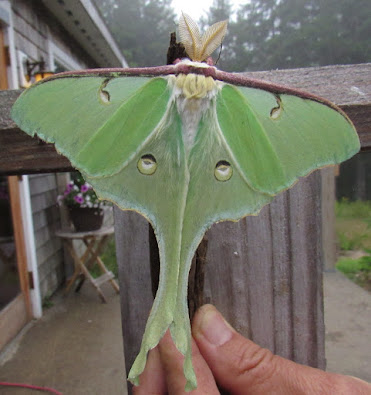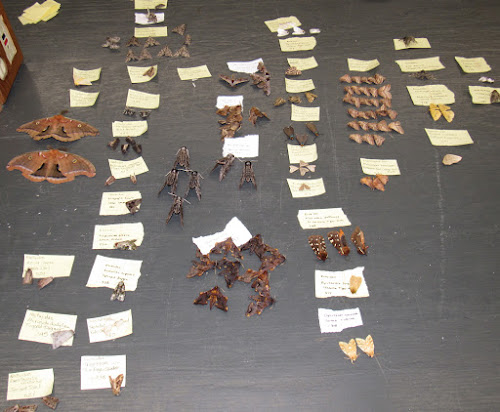July 17: Eagle Hill Institute, Shadbush berries
Kristen Lindquist
Tromping around a sunny field looking for skippers and other butterflies this afternoon, we came across several fruit-laden shadbushes. I had never before tried this ambrosial fruit. Now I'll be fighting off the waxwings whenever I see one.
 |
| Our instructor Bryan Pfeiffer shows us how it's done |
The world offers this up:
sun-ripened shad berries,
azures blue as sky.
 |
| Cherry Gall Azure |












